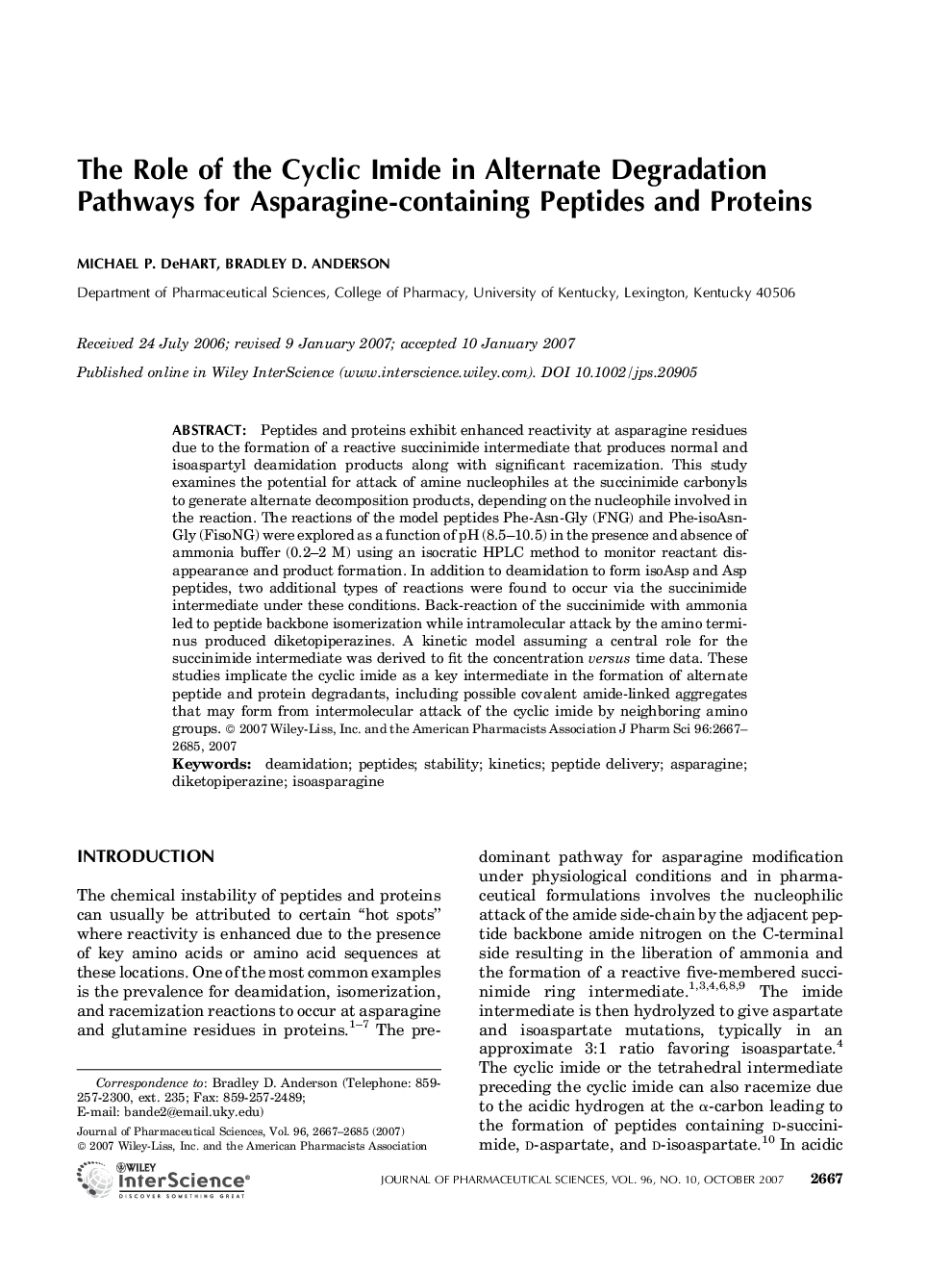| Article ID | Journal | Published Year | Pages | File Type |
|---|---|---|---|---|
| 2485877 | Journal of Pharmaceutical Sciences | 2007 | 19 Pages |
Abstract
Peptides and proteins exhibit enhanced reactivity at asparagine residues due to the formation of a reactive succinimide intermediate that produces normal and isoaspartyl deamidation products along with significant racemization. This study examines the potential for attack of amine nucleophiles at the succinimide carbonyls to generate alternate decomposition products, depending on the nucleophile involved in the reaction. The reactions of the model peptides PheâAsnâGly (FNG) and PheâisoAsnâGly (FisoNG) were explored as a function of pH (8.5-10.5) in the presence and absence of ammonia buffer (0.2-2Â M) using an isocratic HPLC method to monitor reactant disappearance and product formation. In addition to deamidation to form isoAsp and Asp peptides, two additional types of reactions were found to occur via the succinimide intermediate under these conditions. Backâreaction of the succinimide with ammonia led to peptide backbone isomerization while intramolecular attack by the amino terminus produced diketopiperazines. A kinetic model assuming a central role for the succinimide intermediate was derived to fit the concentration versus time data. These studies implicate the cyclic imide as a key intermediate in the formation of alternate peptide and protein degradants, including possible covalent amideâlinked aggregates that may form from intermolecular attack of the cyclic imide by neighboring amino groups. © 2007 WileyâLiss, Inc. and the American Pharmacists Association J Pharm Sci 96: 2667-2685, 2007
Related Topics
Health Sciences
Pharmacology, Toxicology and Pharmaceutical Science
Drug Discovery
Authors
Michael P. DeHart, Bradley D. Anderson,
